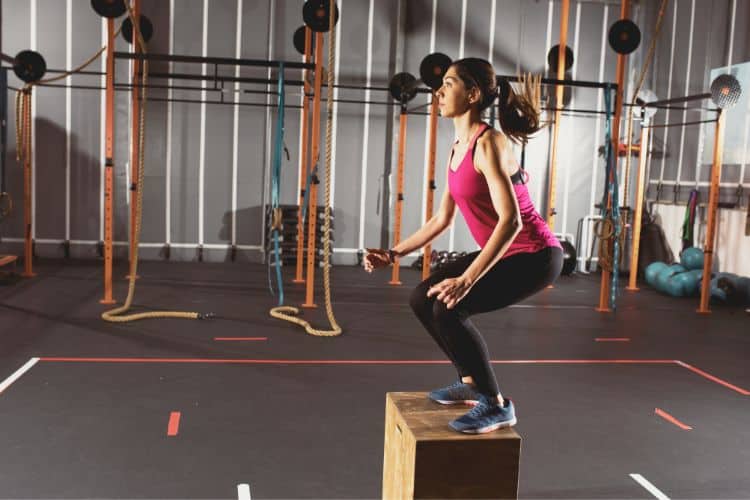Sign up for workout ideas, training advice, reviews of the latest gear and more.






Low-impact strength workouts are ideal for those who want to build muscle, tone their body, and boost metabolism without putting excess stress on their joints. Whether you’re recovering from an injury, new to fitness, or simply prefer a gentler training approach, a 30-minute low-impact strength workout is a safe, effective, and time-efficient solution.
In this guide, we’ll explore the benefits, structure, exercises, and tips for making the most of your low-impact strength routine—all designed with search engines and user intent in mind.
One of the primary benefits of low-impact strength training is joint preservation. Exercises like squats, resistance band rows, and modified push-ups help build strength while minimizing joint impact. Unlike plyometric or high-impact routines, low-impact workouts reduce wear on the knees, hips, and back.
Low-impact strength workouts are perfect for:
Don’t underestimate the power of a low-impact session. Strength training—even at a slower pace—triggers muscle protein synthesis, boosts resting metabolic rate, and improves functional fitness like balance, coordination, and posture.
A well-designed 30-minute session can target all major muscle groups without jumping, bouncing, or high-speed repetitions. Here’s a general format:
You can perform these workouts with bodyweight, resistance bands, or light dumbbells depending on your fitness level and goals.
You don’t need much equipment, but adding light resistance can increase effectiveness.
These tools allow you to scale intensity safely while maintaining joint-friendly movement patterns.
Here’s a complete sample workout that’s joint-friendly, efficient, and can be done at home.
Perform each movement for 1 minute:
Perform each exercise for 45 seconds followed by 15 seconds rest. Complete 2 rounds total.
Hold each stretch for 30–60 seconds:
Targeted resistance helps define muscles in arms, legs, and core—even without lifting heavy weights or high-impact exercises.
Low-impact doesn’t mean low-effort. These sessions keep your metabolism active, help manage body fat, and boost long-term calorie burn.
Slow, controlled movement reinforces proper form and alignment, reducing strain on joints and connective tissue.
Strong muscles support your spine and joints, making everyday activities like walking, lifting, and bending easier and safer.
Move slowly and squeeze muscles intentionally. Longer contractions increase strength-building stimulus.
Add resistance or repetitions as you get stronger. You can also reduce rest time or add a third round to increase challenge.
Core engagement supports your spine and enhances balance. Keep abs slightly braced, even in upper or lower body exercises.
Poor technique can cause injury even in low-impact settings. Perform each move with full control and proper alignment.
Aim for 2–4 sessions per week. Consistency matters more than intensity for long-term strength and joint health.
Low-impact strength training is beneficial for a wide range of individuals:
This style of training offers a safe entry point while still delivering strength, stability, and confidence in movement.
Once you’ve built a solid foundation, you can gently progress by:
These gradual changes help you gain strength and keep workouts engaging.
| Day | Workout Focus | Duration |
|---|---|---|
| Monday | Full Body Low Impact | 30 minutes |
| Tuesday | Active Recovery (Walk/Yoga) | 20–30 minutes |
| Wednesday | Upper Body Strength | 30 minutes |
| Thursday | Core & Balance | 20–30 minutes |
| Friday | Full Body Strength | 30 minutes |
| Saturday | Optional Mobility Work | 15–20 minutes |
| Sunday | Rest | — |
This schedule provides balanced muscle engagement, joint recovery, and sustainable progression for long-term results.
Low-impact strength training proves you don’t need jumping or joint stress to become stronger and leaner. With just 30 minutes a day, you can improve mobility, gain lean muscle, and protect your joints—all from the comfort of your home.
Whether you’re just starting out or adjusting your routine for longevity, these workouts are an empowering way to build strength safely and effectively.
Yes! When structured properly, 30 minutes is sufficient to target all major muscle groups, build strength, and stimulate fat loss.
Absolutely. Combined with a balanced diet, low-impact strength training boosts metabolism, supports fat loss, and maintains lean muscle.
Aim for 3–4 times per week for best results. Allow time for recovery and variety with active rest days.
No, but tools like resistance bands and light dumbbells can help increase challenge and progression over time.
No matter your age, fitness level, or limitations, low-impact strength workouts offer a simple and effective way to get fit without strain. Just 30 minutes can improve your strength, confidence, and quality of life—starting today.
Want more workout and video guide?
Follow us on Pinterest Subscribe to our blog and Stay tuned for FREE downloadable of our App coming soon!
Stay up to date on the latest women’s health, fitness and lifestyle trends and tips.